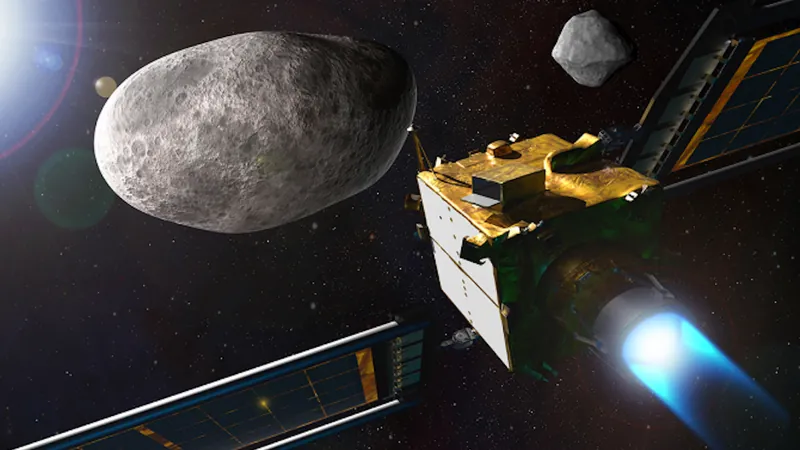
China's Asteroid Collision Mission: A Bold Move or a Threat to Satellites?
2025-09-10
Author: Nur
China Sets Ambitious Asteroid Collision Mission for 2030
In a groundbreaking announcement, China has revealed its ambitious plan to deliberately impact a near-Earth asteroid by 2030. This mission signifies a pivotal step towards enhancing its capabilities in planetary defense and asteroid resource utilization, signaling China's determination to take the lead in space innovation.
Following the U.S. Lead with DART
This announcement comes just three years after the United States' successful Double Asteroid Redirection Test (DART) mission, which proved that a kinetic impactor can indeed change an asteroid's trajectory. With this new initiative, China is positioning itself as a serious contender in the arena of planetary defense technologies.
Nearly Unprecedented Opportunity for Global Collaboration
"Our plan is to launch this mission very soon, focusing on a kinetic impact test against an asteroid," stated Wu Weiren, chief designer of China’s lunar exploration program, during a recent international conference in Hefei. He emphasized that successfully defending against asteroids is not just a scientific pursuit; it’s essential for humanity's long-term survival in space.
The Complexity and Dual Nature of the Mission
The proposed plan involves deploying two spacecraft: one will act as a kinetic impactor, while the other will serve as an observer to closely monitor the collision. While this mission holds promise for advancing planetary defense, some experts warn that the technology involved has military applications, raising concerns about its potential for dual-use.
Geopolitical Implications
China’s ambition goes beyond scientific exploration. Analysts suggest this asteroid mission may enhance Beijing's geopolitical influence, especially as it extends invitations to over 40 countries to join in joint monitoring efforts. This broader collaboration could reshape international dynamics in space.
Challenges Ahead: The Road to Impact
However, the road to a successful asteroid impact is fraught with challenges. As explained by experts, precision in targeting a moving object millions of kilometers away is akin to swatting a fly in motion. Adjustments throughout the spacecraft's journey will be critical to ensure accuracy.
A Long-term Vision for Space Economy
Looking ahead, some Chinese commentators suggest that this asteroid mission is not merely a research initiative but part of a larger strategy to build a trillion-dollar space economy by mid-century. With plans for further tests, including a propulsion-based deflection by 2035, China aims to master asteroid resource utilization.
Concerns from the U.S. Perspective
The U.S. remains wary as well, with military leaders highlighting the advancements in Chinese and Russian counter-space capabilities. Recent threats to satellites, which are vital for global communications and navigation, add to the urgency of monitoring these developments in space.
Conclusion: A Momentous Leap or a Looming Threat?
As China embarks on this groundbreaking mission, the implications are vast. While aiming for scientific achievements and international collaboration, the potential military applications and geopolitical ramifications cannot be ignored. The world watches closely as China charts a course toward the stars.




 Brasil (PT)
Brasil (PT)
 Canada (EN)
Canada (EN)
 Chile (ES)
Chile (ES)
 Česko (CS)
Česko (CS)
 대한민국 (KO)
대한민국 (KO)
 España (ES)
España (ES)
 France (FR)
France (FR)
 Hong Kong (EN)
Hong Kong (EN)
 Italia (IT)
Italia (IT)
 日本 (JA)
日本 (JA)
 Magyarország (HU)
Magyarország (HU)
 Norge (NO)
Norge (NO)
 Polska (PL)
Polska (PL)
 Schweiz (DE)
Schweiz (DE)
 Singapore (EN)
Singapore (EN)
 Sverige (SV)
Sverige (SV)
 Suomi (FI)
Suomi (FI)
 Türkiye (TR)
Türkiye (TR)
 الإمارات العربية المتحدة (AR)
الإمارات العربية المتحدة (AR)